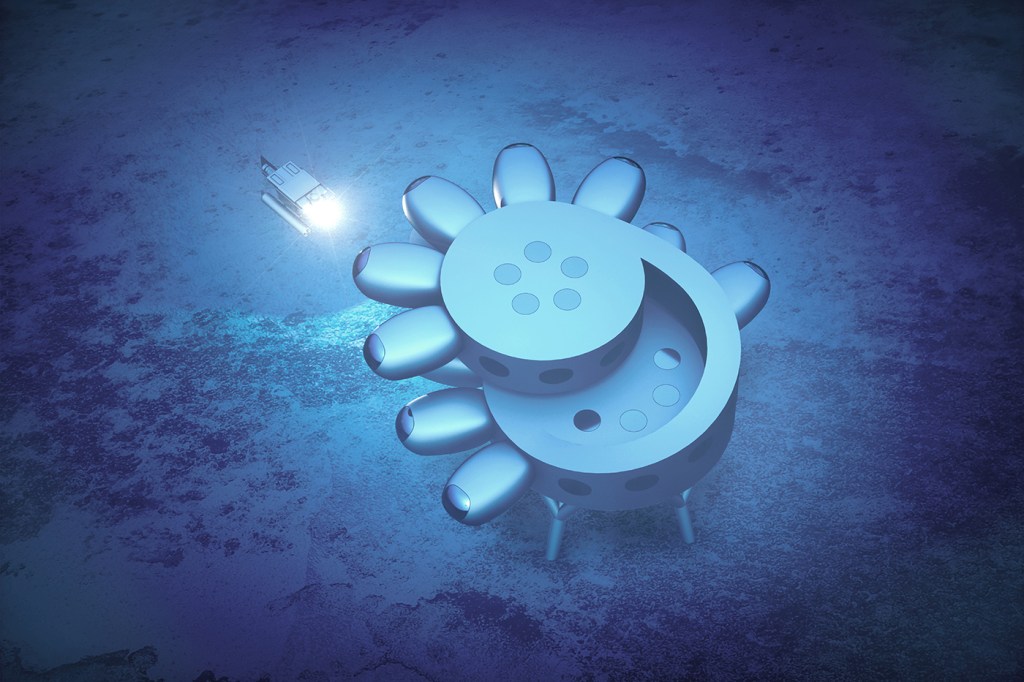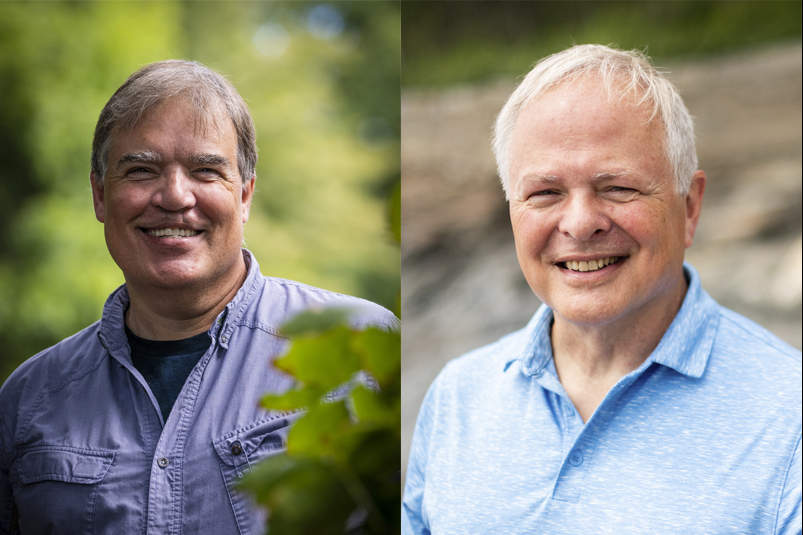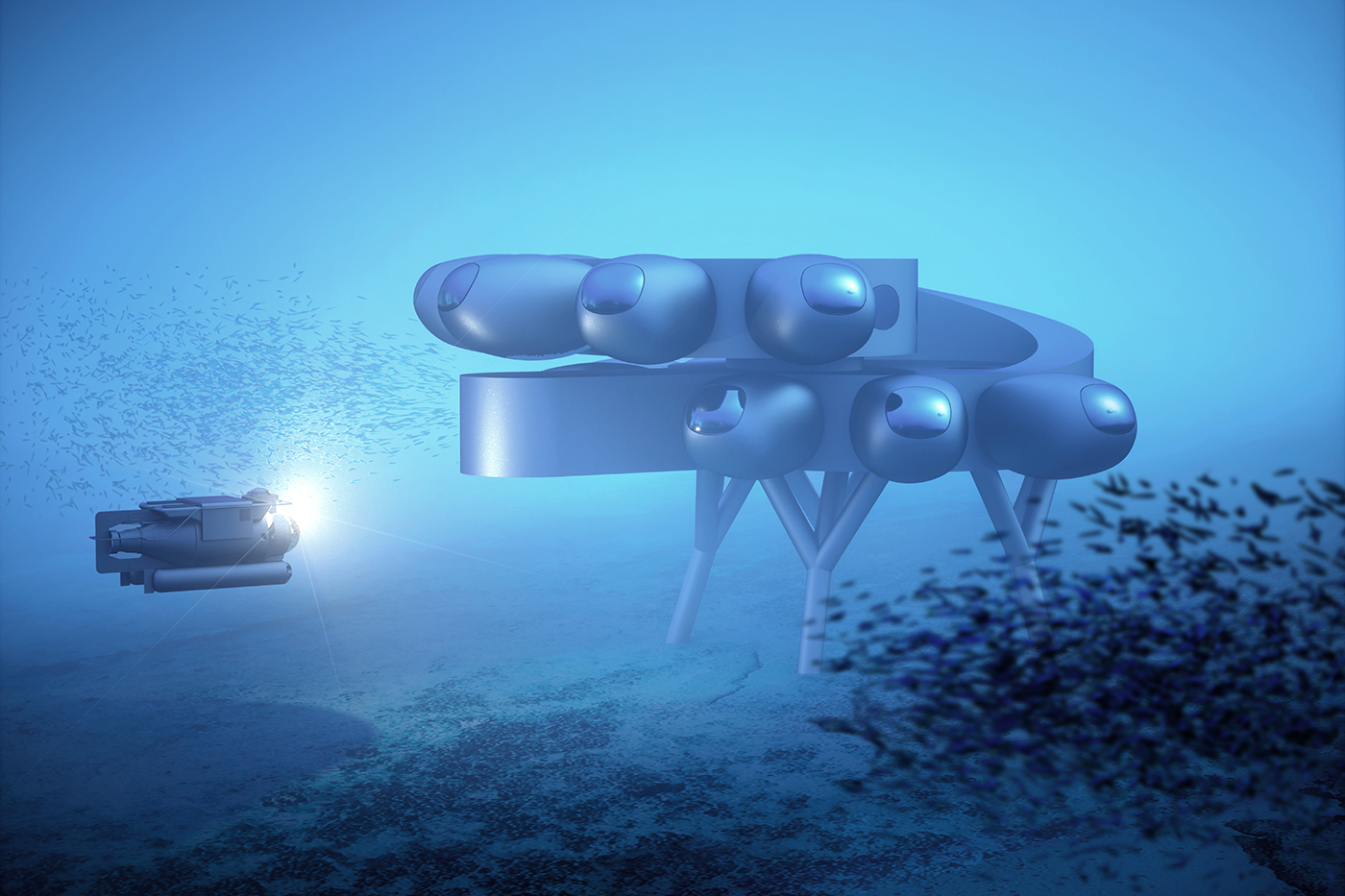It’s like the International Space Station—but under the sea

A couple of Northeastern University professors are taking marine research to new depths as lead scientists for an undersea laboratory where aquanauts can live and work for months at a time.
Imagine taking the International Space Station and plunking it under the waves, says Brian Helmuth, professor of marine and environmental sciences at Northeastern’s Marine Science Center in Nahant.
As envisioned by founder Fabien Cousteau, the grandson of Jacques Cousteau, the Proteus undersea research laboratory will consist of a series of modular, interconnected rooms and laboratories housing 24 aquanauts at a time at a depth of around 60 feet.
Oxygen, food, equipment and power supplies will be delivered from the surface of the earth.
“It really is like going into outer space,” says Marine Science Center professor Mark Patterson, an expert in robotics. He has called Proteus “the International Space Station at the bottom of the sea.”
Next month Patterson and Helmut will travel to the southern coast of Curacao to pinpoint the best location for the underwater research station, tentatively scheduled for installation in 2026.
“We still need to do some diving on the site to look for where the placement will be,” Helmuth says. “The plan is we’ll go down in October, do some scuba diving and use a submersible to look around the area and designate the final location of the habitat.”
“We’re aiming at 60 feet, or actually just a little bit shallower,” Helmuth says. Anything deeper would require use of a specialized mixed gas instead of standard air for breathing, he says.
The underwater station will not be a sealed pressurized system like a submarine.

Instead the pressure inside and outside the station will be equal. That means aquanauts can scuba dive outside for eight or more hours a day without having to take a break to decompress, a technique known as saturation diving.
Normally scuba divers descending as far down as 60 feet have to resurface within 56 minutes before they absorb too much nitrogen to return to the surface without stopping and risking a life-threatening condition called the bends.
Living in a Proteus module underwater means scuba divers can wait to pack all their decompression into a 24-hour period at the end of their stay, Helmuth says.
“You have the gift of time,” Helmuth says.
“You aren’t on a clock saying, ‘Oh, I’ve only got an hour before I have to be back to the surface,” Patterson says. “You can make observations of behavior because you’re actually living in the ocean.”
Patterson and Helmuth have been on multiple missions with the only underwater station currently in existence, the Aquarius station in the Florida Keys.
In 2014, Patterson and Helmuth, stayed on the surface to run the science for Fabien Cousteau’s fabled Mission 31, when he lived in Aquarius for 31 days.
At approximately 400-square-feet, the 36-year-old Aquarius station now operated by Florida International University is a fraction of the size planned for Proteus and operates as more of a collection site than the fully functioning research facility envisioned for the new underwater station, Patterson says.
Plans for the Curacao station have not been finalized, but it could be as large as 2,500 square feet.
Proteus will have laboratories to look at plankton or microplastics and PCR machines to do DNA sequencing as well as an engineering lab to service submersibles and underwater autonomous vehicles.
The station will feature a wet porch entry—also known as a moon pool—a broadcast studio to livestream educational and science presentations, pressurized decompression chambers, kitchen and living quarters and a hydroponic garden, one of the world’s first undersea greenhouses and the first to provide food for aquanauts living underwater.
The new underwater station is just the first in a network of stations Proteus Ocean Group plans to build across the world, says Debora Marrocchino, head of marketing for Proteus.
“Some of the areas of the world that we’re looking at are off the coast of Portugal, Australia and Brazil,” she says.
Marrocchino says Curacao was selected for the first station due to the rich biodiversity of its marine environment and government enthusiasm for the project.
Helmuth says there are plans in the works to partner with schools in Curacao, and of course, Northeastern University.
“We’re already scheming ways we could bring our Three Seas program into the Proteus,” Helmuth says. “Even though we’re a couple of years away from the build, we’re launching the science now” and expect to involve Northeastern students from the start, he says.
“Northeastern really is functioning as the lead academic partner at this point,” Patterson says.

Proteus Ocean Group announced in May it had selected the Drass Group based in Livorno, Italy, as the engineering procurement construction contractor that will handle design and delivery of the underwater station.
Last year it announced Vionic is a corporate sponsor.
The image currently being used to illustrate the concept is an older design, Helmuth says, adding that the new design could be something more like the International Space Station.
Research projects could include breeding of corals for climate resiliency, using sensors to count microplastics in the water column and observing how reef organisms are impacted by changing weather patterns under water.
“We have got really good at measuring environmental conditions globally, using things like satellites,” Helmuth says. “But being able to live in the reef environment is incredibly rare.”
The station will also serve as a laboratory for observing the human impact of living underwater for prolonged periods, including changes in skin conditions, the gut microbiome and sleep patterns, Helmuth says.
“It’s psychologically very interesting to realize you can’t escape to the surface, that you’ve got to become one with the fish around you,” says Patterson, who has spent 90 days living underwater on 10 missions, including two with a now defunct station called Hydrolab.
“It’s really magical to go out at night and look back at the habitat all lit up like a space station surrounded by inky blackness with all these fish and plankton swirling around it and realize, ‘That’s my home,’” he says.
For media inquiries, please contact media@northeastern.edu.





